Week 11: Increasing your activity levels
People with chronic pain cope with it in different ways. Below are three examples of how different people have tried to deal with their pain.
| EXAMPLE 1 | |
|
Emma’s activity levels were high. She fought with her pain and tried to “beat it” e.g. she was constantly more active than her pain allowed. She didn’t want to “give in” to the pain and felt it had “won” if she had a rest. She pushed through the pain and wouldn’t stop and rest. Her motto was “no pain, no gain”. In the end she found this way was hard work and very tiring. She often suffered from low mood, was upset, frustrated and felt she had failed. Sometimes there seemed little choice but to push to try to stay at work. Resting was not an option, the kids had to be fed, dropped off and picked up from school etc. In this example the pain won in the end and Emma was tired out, depressed, upset and had given up fighting with her pain. |
| EXAMPLE 2 | |
|
Jim did more on good days. He wanted to get things done when the pain was less, activity was not so hard and he had more energy. It was a chance to shop and garden. Sometimes he got away with doing quite a lot of things, but it usually ended up having a bad day the next day, or a few days later. He would rest and recover until the pain eased when he started overdoing it again. For Jim the pain was very much in control. When the pain was less he did more and when the pain was more, he did less. As time went by he seemed to be able to do less and less each time he had a good day. Jim couldn’t plan ahead because he didn’t know how he would be feeling. |
| EXAMPLE 3 | |
|
Sasha said she couldn’t carry on trying to beat the pain. The good day/bad day cycle was too much of a roller coaster. She avoided doing much for fear of flaring-up her pain. She didn’t do much but at least she felt she could keep on top of it. But she had a poor quality of life, wasn’t able to do much, had little fun and often her mood was low. She also felt a lot less fit and was tired when she tried to do anything. |
|
How to manage your activity
|
|
Suggestions
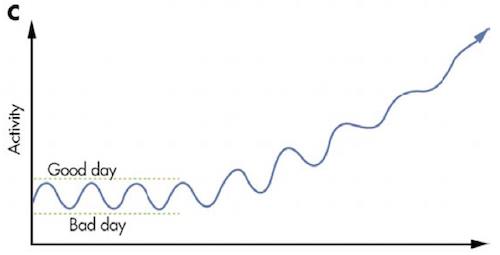
a. Plan how you intend to start an activity and how long you will do it for. Just as an athlete
in training you can then gradually build this up to a level which you are happy with. This pacing of your exercises helps you to introduce things in a controlled and responsible manner.
b. Set yourself positive goals which are realistic, specific and measurable you will begin to see how you are progressing.
c. Prioritise your activities so that you are achieving things in the order that you would like to. Also if you are finding things difficult
d. then you can have finished the tasks most important to you.
e. Exercise whenever possible, this will not only keep you fit and take your mind of things, but may also help you feel better.
Boom Bust Cycle
Doing too little or too much both can increase pain. So the solution is to pace your activities so you don’t ever do too little or too much.
Setting daily goals on, say 30 minutes walking, can be very useful. You do this 30 minute walk every day, and this does not depend on how much pain you are feeling on that day (remembering that persistent pain is not ‘useful’ pain as it is not related to any ongoing inflammation or tissue damage).
Your body will get used to normal activities and these in time will become easier and more comfortable to do. Think of the knock-on effect on your mood and confidence. It can only improve, right?
Slowly and steadily you can increase the baseline activity level. In this example, to perhaps 35 minutes. Don’t increase too much or too quickly.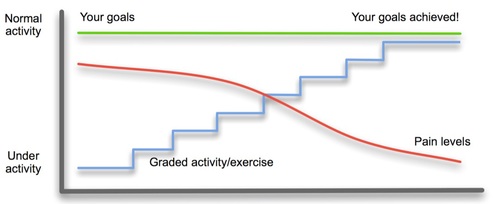


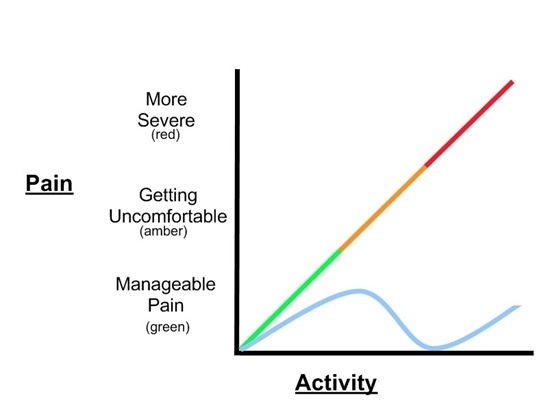
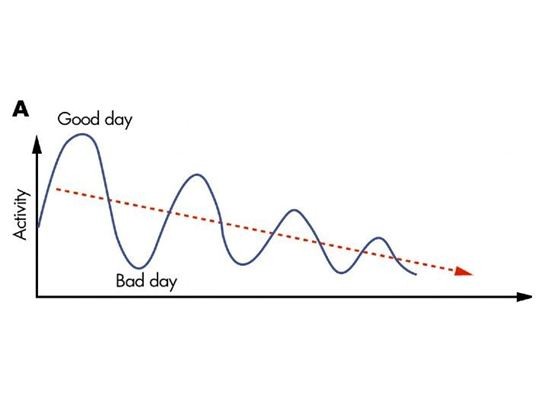
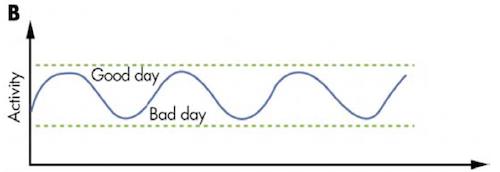
 Download Week 11
Download Week 11